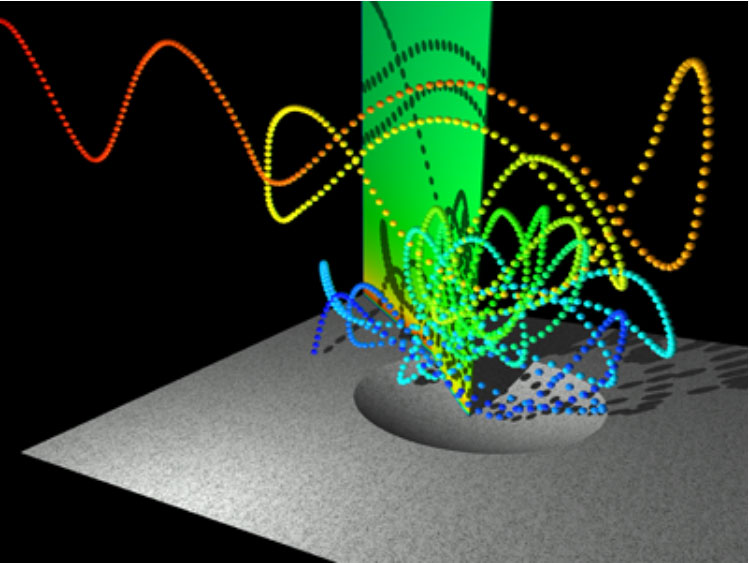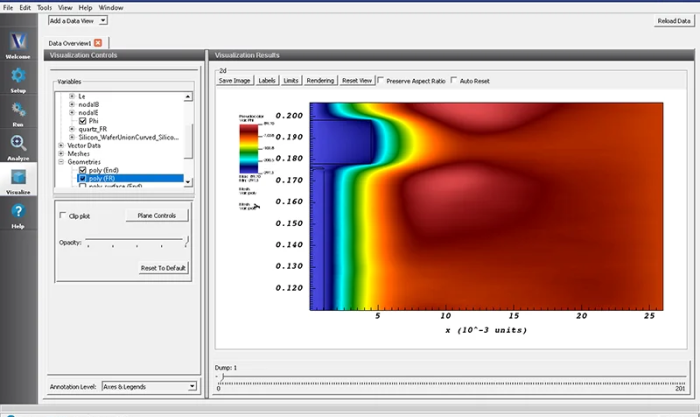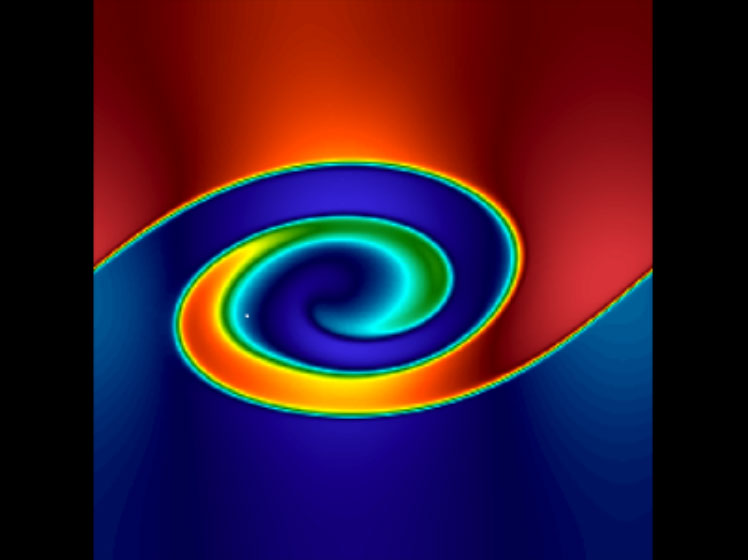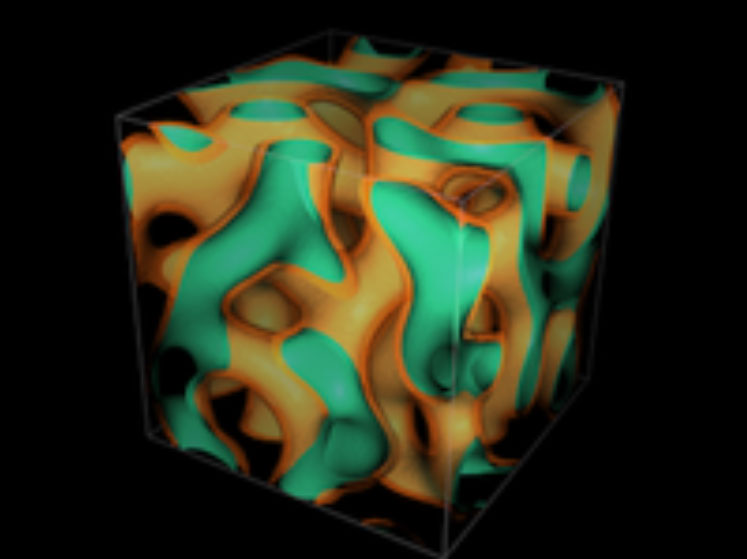
VSim
VSim is a flexible, multiplatform, multiphysics simulation software tool. VSim is designed to run computationally intensive electromagnetic, electrostatic, and plasma simulations in the presence of complex dielectric, magnetic, and metallic shapes.
VSim simulates a variety of problems on regular, structured, orthogonal meshes of complex geometries by using embedded boundaries (cut cells). Geometries can be imported into VSim from CAD models or constructed in the VSimComposer front end. The cut cells, which are where the geometry intersects the grid, define the non-grid-aligned, or conformal, field and particle boundaries. VSim's conformal Finite-Difference, Time-Domain (FDTD) methods and conformal particle boundary conditions enable rapid computation of Maxwell's equations. Whether your experiment depends on using a full or approximate model of Maxwell's equations, VSim provides the accurate solution.

Self-consistent solutions in the presence of charged particles are carried out by VSim using particle-in-cell (PIC) methods and/or charge fluid methods. You can post-process your resulting data using VSim's built-in analyzers or your own Python analyzers. Incorporating your own custom analyzers into the VSim framework is simple.
Switch easily between 1, 2 or 3 dimensions, and then watch your model run rapidly using algorithms designed for the exacting demands of high performance computing systems, whether on your laptop or supercomputing cluster. VSim easily installs and runs on a variety of systems, including Windows, MacOS, and Linux platforms.

USim
sing structured or unstructured meshes, USim quickly and accurately solves such basic problems as shock and instability capturing in inviscid, compressible neutral gas flows (Euler equations) or profile evolution in ionized plasmas (ideal MHD equations).
VSim simulates a variety of problems on regular, structured, orthogonal meshes of complex geometries by using embedded boundaries (cut cells). Geometries can be imported into VSim from CAD models or constructed in the VSimComposer front end. The cut cells, which are where the geometry intersects the grid, define the non-grid-aligned, or conformal, field and particle boundaries.
USim Supports
- Hydrodynamics
- Magnetohydrodynamics
- Hall magnetohydrodynamics
- Two-fluid plasmas
- Navier-Stokes and Maxwell's equations
All Physics Models in USim
- Can be solved on structured, body fitted and unstructured meshes in multi-dimensions
- Support Cartesian, Spherical, and Cylindrical coordinate systems
- Work for single and multi-core systems
- Run on Windows, Mac OS X, and Linux operating systems

PSim
PSim quickly solves the numerical self-consistent field theory (SCFT) equations for modeling copolymers.
The SCFT algorithm is rigorous method for coarse-graining models of complex block copolymer mixtures such that sufficient detail is retained to describe the novel morphologies these materials form when they undergo phase segregation. This coarse-graining procedure allows researchers to study block copolymer structure in simulations that can run much faster than more explicit methods such as classical all-atom molecular dynamics.
PSim's built-in three-dimensional visualization capability, multi-platform availability (Linux, Mac OS X, and Windows), and examples will get you up and running quickly.
PSim Supports
- Fully flexible chain model
- Neutral, dense polymer melts
- Flory-type interactions
- Pseudo-spectral solution methods
- Hybrid-SCFT
- Arbitrary confinement
PSim Simulates
- Multi-block Copolymer mixtures
- Confined Copolymers
- Nanocomposites

